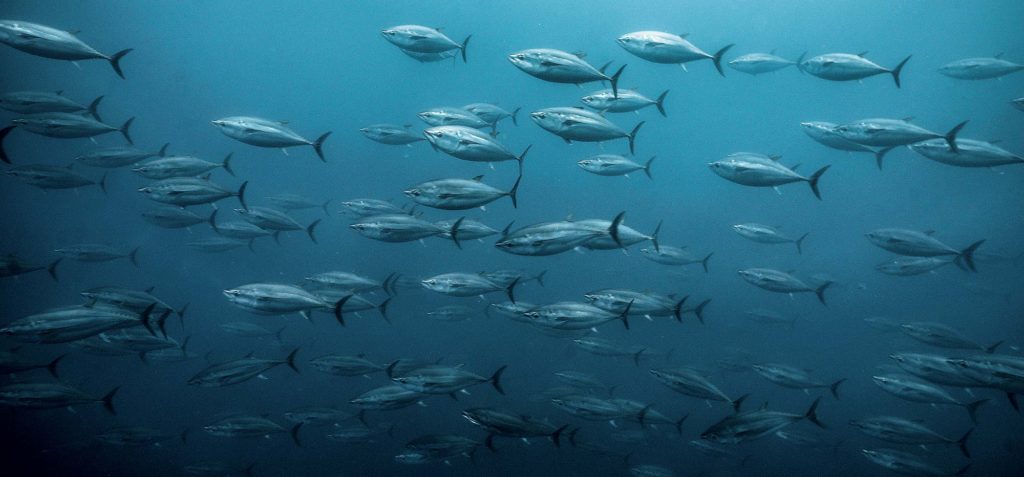
“These are some of the most spectacular bites you’ll ever experience.”
That’s how Capt. Jimmy Kingsmill tantalizes newcomers when describing the technique of kite-fishing for big bluefin tuna. And there are a lot newcomers in the region where he fishes. He’s talking not about Atlantic waters, but rather about the Pacific off Southern California and northern Baja.
Over the past four years, big Pacific bluefin tuna have taken up residence here, refusing to abandon a huge biomass of pelagic red crabs and other forage.
Many Southern California anglers are accustomed to targeting bluefin tuna up to 100 pounds. But now, bluefin are reaching weights of 300 pounds and more. “I’ve not seen so many big bluefin in my lifetime,” says Kingsmill, based in Long Beach, who’s fished these waters for 40 years.
These tuna have also grown wary. “The big ones are boat-shy,” says Capt. Barry Brightenburg of Always an Adventure sport-fishing charters. “They’ve dodged 500 miles of Mexican purse seiners en route to U.S. waters.”
Pacific bluefin tuna have found some refuge from seiners in U.S. waters, thanks to the National Marine Fisheries Service’s severe restrictions on commercial fishing for 2017 and ’18. However, they’re still spooky, and that has led to an increased use of kites.
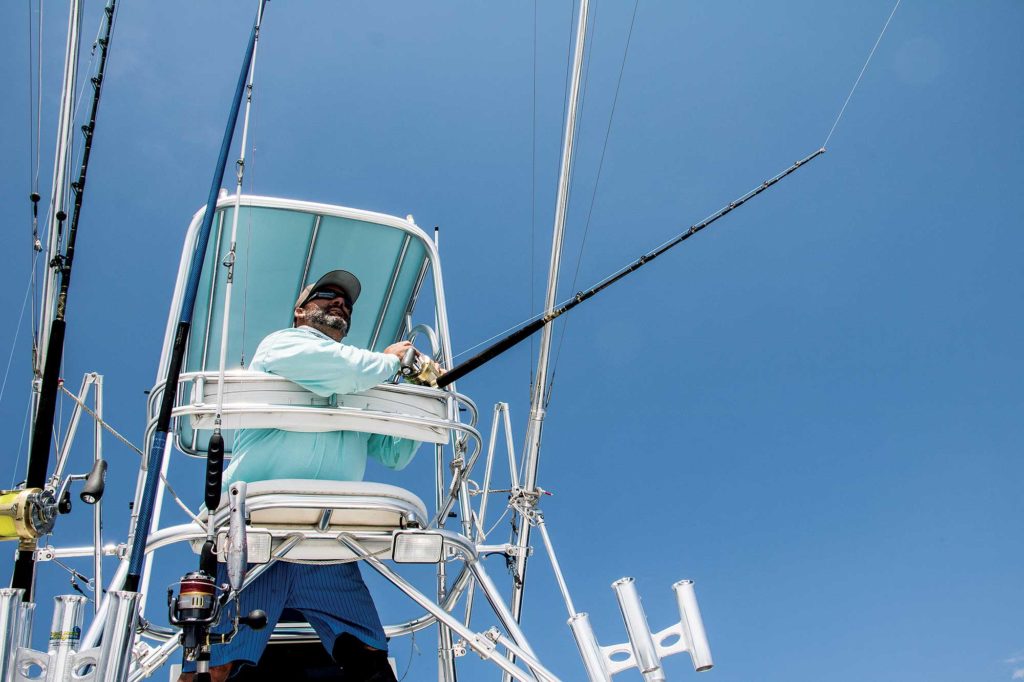
Kite-Trolling
Most anglers here are trolling lures with kites, a trend that began about four years ago. “We’re still learning,” Kingsmill says in his modest fashion. “What we know now is that properly trolling a flying-fish imitation from a kite can get the big tuna to strike.”
There are a number of subtleties to this method, but in general terms, only one kite is employed and, in most cases, only one line is fished. A key element of the effectiveness lies in the ability to troll a lure well outside the boat wake.
It’s hard to get close to them, Kingsmill has discovered. “I’ve driven over schools that are at 120 feet on the fish finder,” he explains. “As soon as the boat passes over them, they dive deeper.”
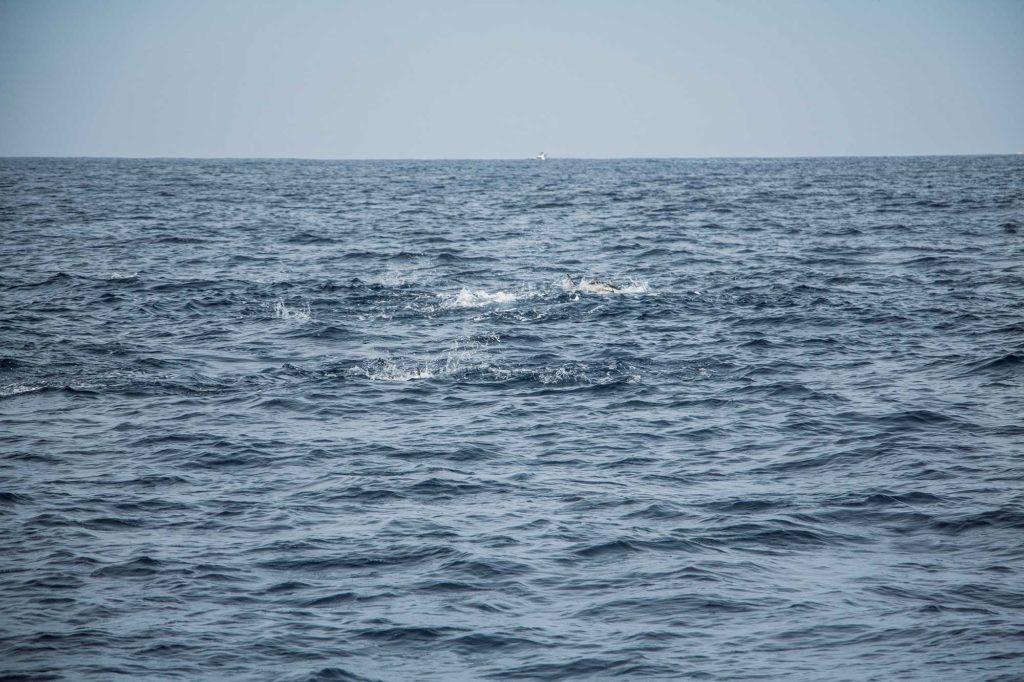
Finding the Fish
As in any kind of offshore angling, the first step is to find the fish. The schools might show up anywhere from the Channel Islands off the Ventura County coast to Punta Colonet off the coast of northern Baja California — a distance of more than 300 miles along the coast, and a lot of water to cover.
Online forums that focus on Southern California fishing can be helpful. Some anglers form code groups to share information. A few captains connect with pilots of spotter planes that cruise the coast in search of swordfish for harpoon boats. These aviators often spot the schools of tuna from aloft. However, the schools can move overnight, so avid boating anglers also buddy-up on game day to help one another scout the offshore waters.
Last year, concentrations of big bluefin hung around the backside of San Clemente Island for much of August and September. In years past, anglers have found fairly stable concentrations of big bluefin around offshore banks such as the 43-fathom spot below San Clemente Island, and sometimes even closer to the coast.
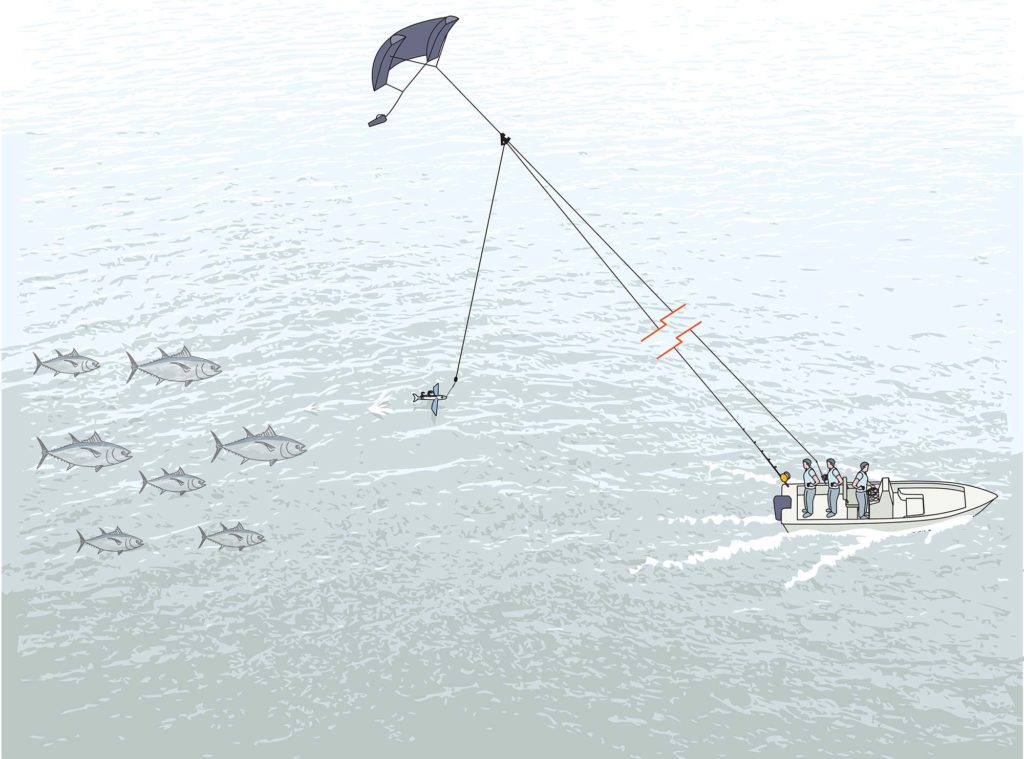
Trolling Pattern
The most successful kite-trolling for bluefin takes place with the boat running at roughly a 90-degree angle to the wind, says Dave Pfeiffer, president of Shimano America, who has targeted these fish for the past four years. “Kite-trolling with the wind on your beam keeps the lure off to the side, and largely away from the boat and its wake,” Pfeiffer points out.
Sea state plays a role in how far you set out the kite, Brightenburg says. “The more chop, the closer to the boat you can fly the kite,” he explains. When the water is calmer and/or there are more boats, you need to set the kite out farther, he adds. At the closest, Brightenburg says, he will set out 100 yards of kite line. At the farthest, he will let out 300 to 500 yards of line.
Part of the formula is the angle of the kite; the steeper the angle at which it flies, the more line is necessary to distance the lure from the boat. A single release clip such as an AFTCO Goldfinger kite-release clip, is set about 75 feet from the kite.
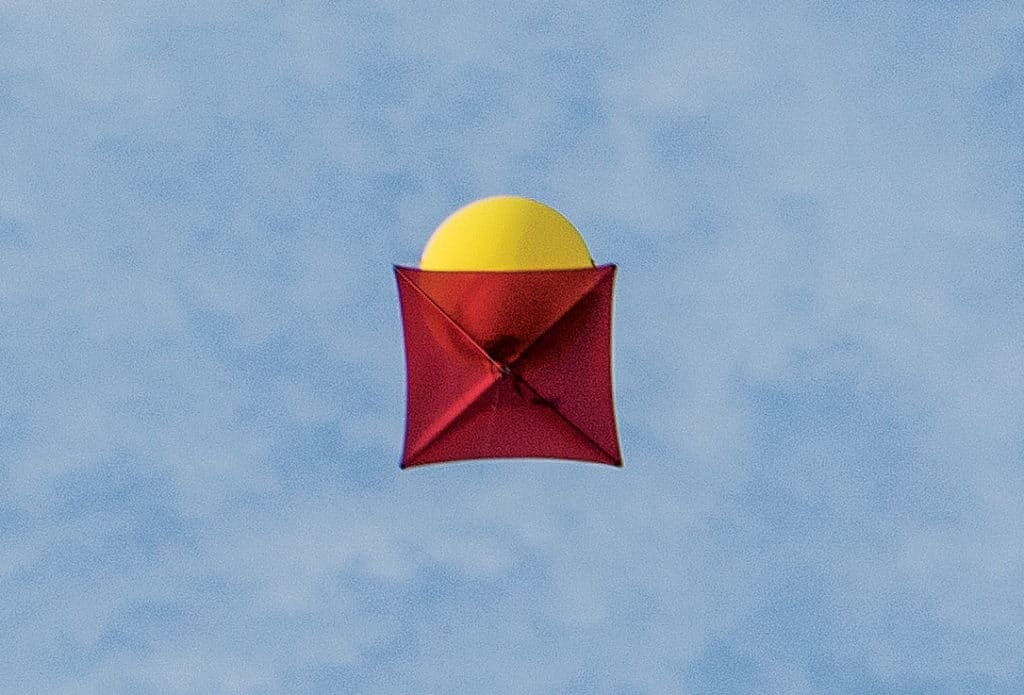
Rigging and Flying
Effective kite-trolling with a lure such as a Yummee Flying Fish by Carolina Lures involves a great deal of finesse. It starts with how the lure is rigged.
Among a number of rigging variations, a typical one starts with a 6-foot, 300-pound-test monofilament leader. An egg sinker ranging from 2 to 4 ounces is threaded onto the leader, and then the leader is crimped to a size 9/0 O’Shaugnessy hook that’s threaded into the nose of the lure to emerge from a slot in the back of the flyer. A heavy-duty barrel swivel is crimped to the top of the leader.
A 5/0 O’Shaugnessy treble stinger hook is crimped to the eye of the main hook with a short 300-pound leader that also emerges from the slot in the back. Some anglers secure the stinger hook near the tail with a small plastic zip tie.
Next comes the trolling technique. “If you troll too slowly, the lure will just drag through the water, and that’s not nearly as productive as actually flying the lure,” Pfeiffer points out. The idea, he adds, is to replicate the behavior of flying fish.
“Think in terms of paddle, paddle, paddle, glide,” Brightenburg says. That’s how a flying fish takes off, and so the lure should do the same thing, he explains. During the paddle, you want the lure just skimming the surface. The glide distance (in which lure is out of the water) can stretch for 20 feet or more.
Brightenburg believes that the flying technique triggers bluefin to give chase, like teasing a house cat by pulling a string of yarn across the floor.
To achieve the desired effect, the lure needs to move at around 8.5 knots (just under 10 mph), says Kingsmill. “That’s the magic speed,” he says. Any trolling speed much slower or faster, the lure won’t perform as intended.
Another key to success lies in the angle of the fishing line from the release clip. “It needs to be no less than 60 degrees,” Kingsmill advises. To put it another way, it needs to be as vertical as possible for the lure to perform effectively.
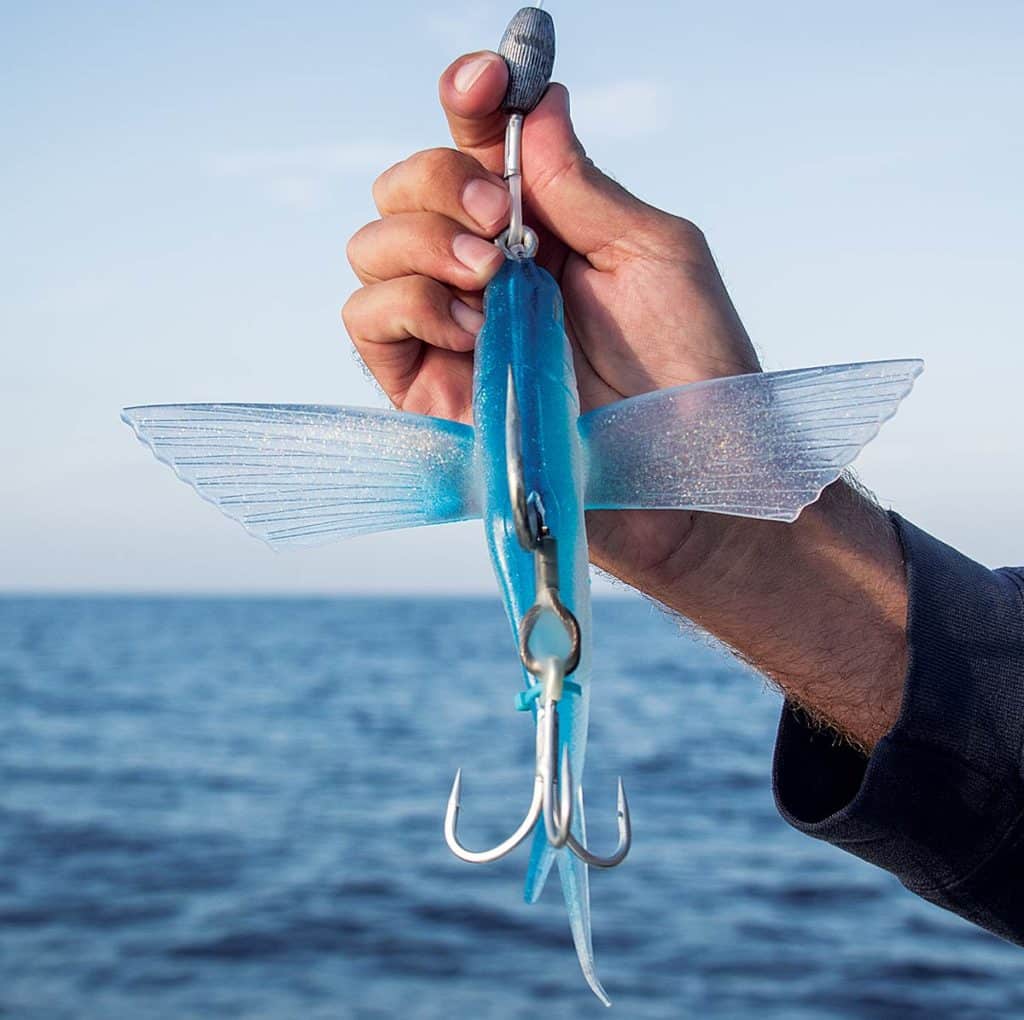
Tending Lines
Don’t expect to sit back and wait for a bite. The technique requires teamwork — the active participation of at least two crewmembers (plus the captain), all of whom need to keep their eyes peeled while tending lines.
With a moving 8-inch-long Yummee flyer positioned a football field or more from the boat, just seeing the lure can present a challenge. To track the flyer, some anglers use gyro-stabilized binoculars such as Fujinon’s Techno-Stabi 14×40 or the vastly more expensive Fraser Optics 14×40 Stedi-Eye binos.
“It pays to watch with the gyros to see how the lure is flying,” Pfeiffer points out. He uses a pair of Frasers from the tower of his SeaVee 32, while a crewmember relies on a pair of Fujinons in the cockpit. This lets them determine if a different speed or line angle is required. Crew in the cockpit can then make the adjustments.
Indicators such as a strip of colored ribbon tied to the leader can help locate the lure, but some anglers believe it can spook bluefin, so they don’t employ it.
Read Next: Bluefin Tuna Bonanza in Southern California
Two crew in the cockpit also need to team up when the time comes to make a turn while kite-trolling. It’s essentially an about-face — a 180-degree turn to keep the wind on the boat’s beam.
The challenge lies in keeping the kite aloft and preventing lines from tangling. “When I am captaining one of my regular boats, a Contender 36 Fish Around, I’ll signal the crew that I am making a turn,” says Brightenburg, who then executes a sweeping turn into the wind to keep the kite aloft, eventually ending up with the wind on the opposite side of the boat. The fishing rod-and-reel is best positioned in a rod holder in the downwind stern quarter. With this in mind, you need to shift this outfit to the opposite side during the turn. It’s critical that the fishing line always remain below the kite line. To help ensure this, the kite is often flown from a tower or flybridge.
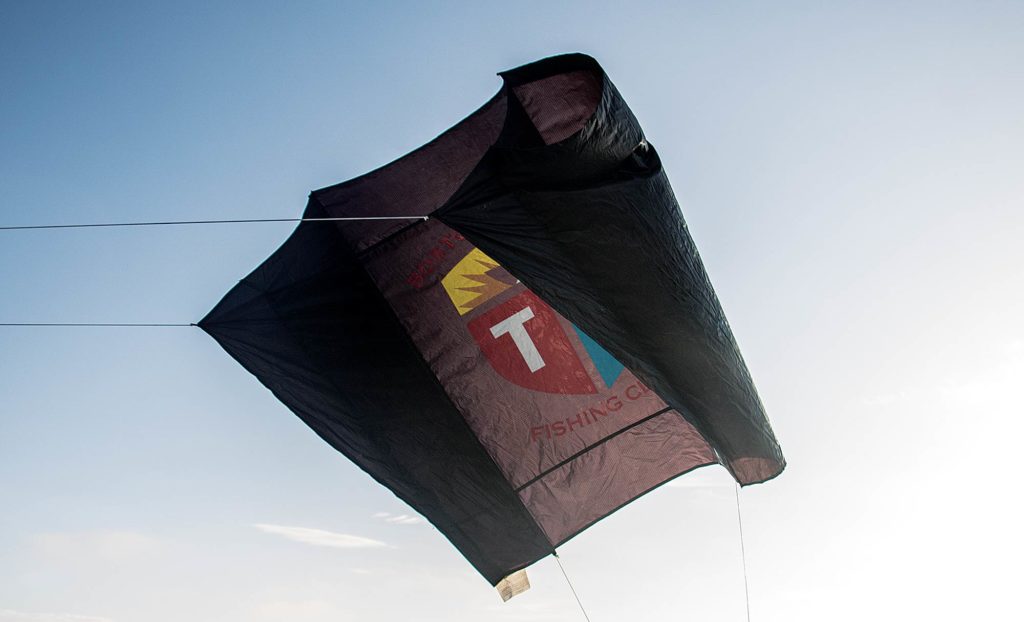
Types of Kites
A variety of kites will work for trolling a flying-fish lure, but the most popular for this technique in Southern California is the Boston Big Game Fishing Club kite. Unlike an AFTCO or Bob Lewis kite, the black Boston Big Game kites use an air-foil design and stabilizing wind-sock-like tail. It’s relatively easy to fly, stays aloft in light breezes, yet also remains stable at speeds up to 20 mph. That’s good to know in case you need to pick up boat speed to reach a spot of fish.
An increasing number of anglers are also turning to 36-inch-diameter helium balloons secured to AFTCO or Lewis kites, says Kingsmill. “Serious guys use helium,” he reveals, indicating that this is helpful on calm-wind days and aboard larger sport-fishing yachts such as the 54-foot Viking that he regularly captains. Larger boats can’t always come about or accelerate as quickly as smaller craft, and the helium ensures that the kite stays aloft at all times. Many of the larger commercial-passenger sport-fishing vessels — aka party boats — use helium for the same reason.
Deploying a kite with the boat moving at trolling speed can pose a challenge due to the station-wagon effect of some boats. Air swirls back into the cockpit while underway, sucking the kite down and forward as you pay out line. To escape the station-wagon effect, launch the kite from the bow or amidships. Once your kite is airborne and clear of the boat’s draft, you can move back into the cockpit to finish deployment.
Most kite reels are spooled up with at least 80-pound-test braided line, which offers a compromise between high strength and low wind resistance. An increasing number of Southern California anglers are gravitating to electric reels such as the Shimano ForceMaster and with kite rods such as Shimano’s Terez kite rod.
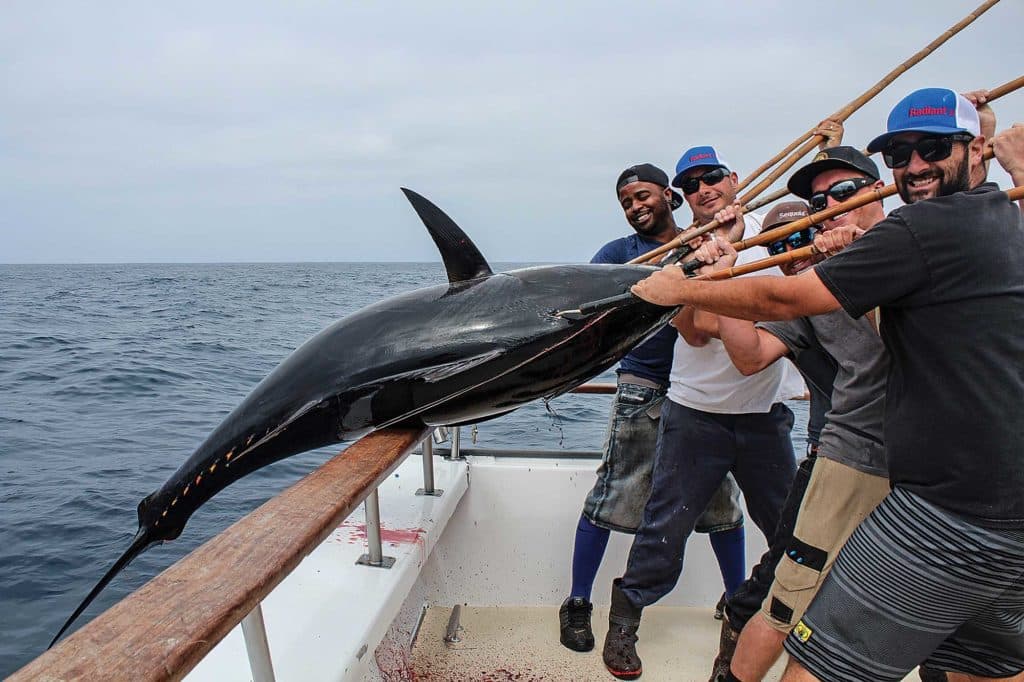
Hookup Drill
The tension setting of the release clip plays a pivotal role in successful hookups, says Pfeiffer. “You want the tension very tight,” he advises, “so the fish can’t open the release clip.”
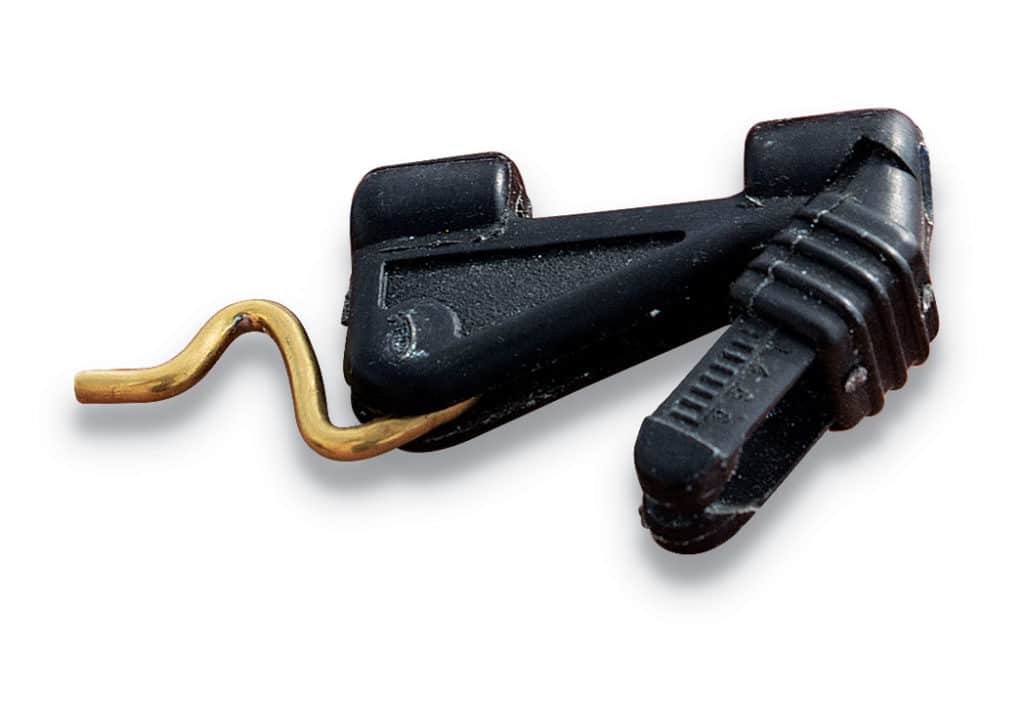
A number of fish might blow up on the lure before one actually eats it. If the clip releases when a fish just bats at the lure, you’re out of the game, Pfeiffer points out. So, many anglers wait until they have a solid hookup, then they retrieve the kite line and manually open the release clip as it comes into reach.
When a fish does eat, you need to keep the boat moving, or even accelerate to get the line tight, Pfeiffer says. “At the same time, the angler needs to keep reeling. Don’t even take the rod out of the rod holder. Just reel,” he explains. “Keep this up until line is spilling off the spool. Then you can lift the rod out of the holder.”
The increasing size of bluefin tuna off the West Coast and the amount of line required to fish this technique call for relatively heavy tackle. Brightenburg recommends a reel such as Shimano Talica II 50 lever-drag two-speed spooled with 100- to 200-pound-test PowerPro Hollow Ace braided line and 300-pound-test wind-on top shot. He recommends matching this to a rod such as a Shimano Terez 5½-foot heavy-action stand-up rod with a curved butt rated for 100- to 250-pound-test line.
In an ironic twist, Southern California served as the birthplace of kite-fishing, but only now are anglers here acquiring the skill to fool big fish and trigger spectacular bites with the long-forgotten aerial attack.
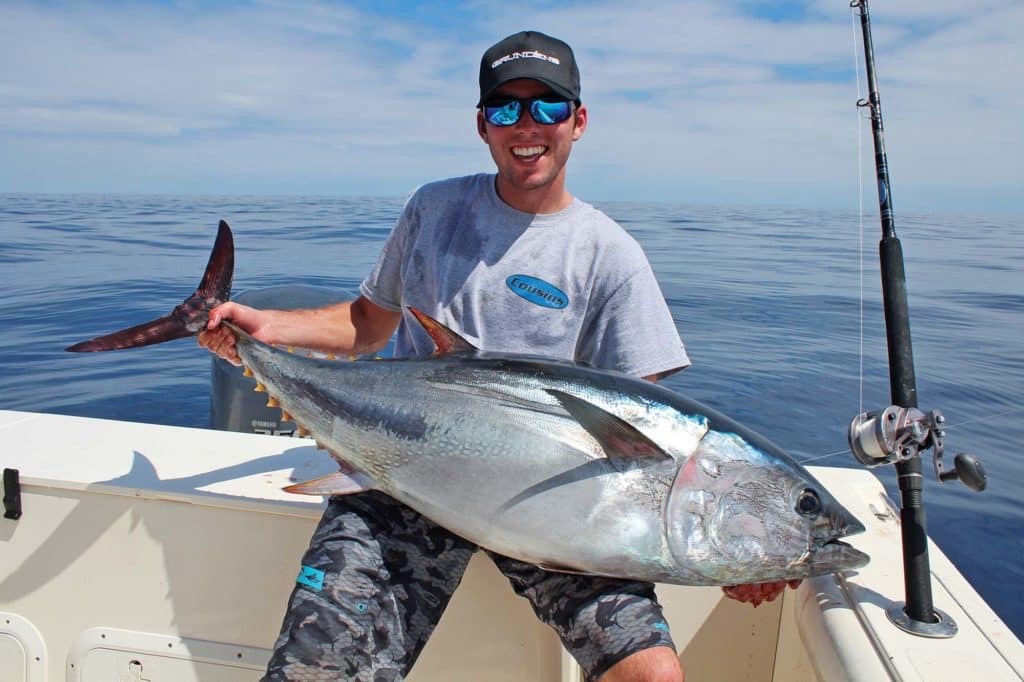
Birth of Kite-Fishing
Kite-fishing and big-game angling were born in the waters off Southern California around the turn of the 20th century, pioneered by members of the Avalon Tuna Club, most notably George C. Farnsworth, who targeted big bluefin tuna (then known as leaping tuna) with rigged baits such as flying fish. It was a Farnsworth-rigged bait, trolled by a kite, that led William Boschen to angling history’s first broadbill swordfish in the early 1900s, according to the archives of the tuna club.
Anglers in South Florida were smart enough to capitalize on kites in subsequent years, refining the technique to a fine art while targeting sailfish and other species with live bait.
But kite-fishing did not become popular in Southern California until recently, although some captains such as Billy Miyagawa Jr., who skippers Gambler, were quietly using kites to target big yellowfin in the waters off Cabo San Lucas, Mexico.
The lingering presence of big bluefin tuna off the coast of Southern California finally ignited a renaissance in the technique of kite-fishing in its very birthplace.








